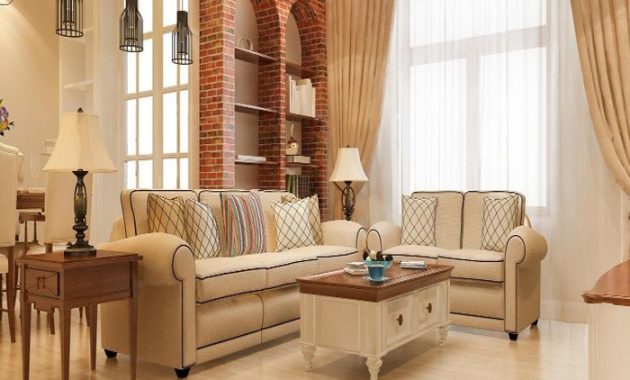In the realm of interior design, the notion that one size fits all is quickly dispelled. Each person brings their own set of tastes, preferences, and lifestyle considerations to the table when it comes to decorating their living spaces. This diversity leads to a rich tapestry of design possibilities, where custom furniture shines as a beacon of personal expression. By opting for bespoke pieces, individuals can transcend the limitations of mass-produced options and imbue their homes with a unique flair that speaks to their distinct personality.

Custom furniture serves as more than just functional pieces within a room; they become the very building blocks of a narrative, reflecting the essence of the homeowner’s style and sensibilities. Whether it’s a handcrafted dining table or a bespoke sofa, each item tells a story of craftsmanship and attention to detail. Moreover, these personalized pieces offer a sense of exclusivity, elevating the ambiance of the space and creating an environment that feels curated and intentional.
Understanding Custom Furniture
Before exploring the realm of custom furniture, it’s crucial to understand the fundamental concept. Custom furniture encompasses pieces that are meticulously crafted to meet particular specifications, whether it’s adjusting size, shape, material, or design elements. This tailored approach sets custom furniture apart from mass-produced alternatives, as it offers a unique level of personalization that goes beyond the constraints of standardized options. The versatility of customization extends across various furniture types, including sofas, tables, cabinets, and beds, providing ample opportunities for individuals to manifest their creative visions while ensuring functionality and practicality.
In delving deeper into the realm of custom furniture, it becomes evident that its allure lies in its ability to fulfill specific needs and preferences. Unlike off-the-shelf furniture, which often necessitates compromises due to limited options, custom pieces empower individuals to dictate every aspect of the design process. Whether it’s accommodating unique spatial constraints or aligning with a particular aesthetic, customization ensures that each piece resonates with the owner on a deeply personal level. Moreover, the collaborative nature of creating custom furniture fosters a sense of connection between artisans and clients, resulting in truly bespoke pieces that reflect both craftsmanship and individuality.
The Benefits of Custom Furniture
1. Tailored to Fit
One of the primary advantages of custom furniture is its ability to fit seamlessly into any space. Whether dealing with oddly shaped rooms or compact apartments, custom pieces can be designed to maximize utility without compromising aesthetics.
2. Express Individuality
Mass-produced furniture often lacks character, leaving spaces feeling generic and uninspired. Custom pieces, on the other hand, serve as a canvas for self-expression. By collaborating with designers and artisans, individuals can infuse their personality into every detail, from the choice of materials to the intricacy of the design.
3. Quality Craftsmanship
While cost-effective, mass-produced furniture often compromises on quality to meet demand. Custom furniture, however, prioritizes craftsmanship, with artisans dedicating time and attention to each piece. This leads to furniture that not only possesses an exquisite appearance but also endures over time, becoming treasured heirlooms passed down from one generation to the next.
4. Functional Adaptability
In today’s ever-evolving world, adaptability is key. Custom furniture offers the flexibility to adapt to changing needs and lifestyles. Whether it’s a modular sofa that can be reconfigured to accommodate guests or a multi-purpose storage solution that maximizes space, custom pieces are designed to evolve with the individual.
Utilizing Custom Furniture in Different Spaces
1. Living Room
At the core of every household, the living room serves as the intersection of style and comfort. Custom sofas and coffee tables can set the tone for the space, whether it’s a cozy haven for relaxation or a vibrant hub for entertaining. Incorporating personalized touches such as custom upholstery or handcrafted accents adds layers of character and warmth.
2. Bedroom
A sanctuary for rest and rejuvenation, the bedroom should reflect personal tastes and preferences. Custom beds and wardrobes offer not just storage solutions but an opportunity to create a haven tailored to individual needs. From luxurious upholstered headboards to bespoke bedside tables, every element can contribute to a space that feels uniquely yours.
3. Dining Room
The dining room is more than just a place to eat; it’s a gathering space where memories are made. Custom dining tables and chairs set the stage for intimate dinners or festive feasts, while personalized cabinetry and buffets provide both storage and style. By blending functionality with aesthetics, custom furniture elevates the dining experience to new heights.
4. Home Office
With remote work on the rise, the home office has become an essential part of modern living. Custom desks and shelving units not only optimize productivity but also reflect individual workflow and organization preferences. Ergonomic chairs and personalized storage solutions ensure comfort and efficiency, transforming the home office into a space where work meets inspiration.
In today’s world flooded with mass-produced items, custom furniture emerges as a symbol of individuality and innovation. Through the art of customization, people have the opportunity to convert their living spaces into reflections of their distinct personalities and lifestyles. Whether it’s the cozy ambiance of the living room or the productive environment of the home office, custom furniture opens up a realm of infinite possibilities, marrying functionality with aesthetics seamlessly. Thus, the question arises: why conform to the mundane when the extraordinary allure of custom furniture beckons?
In a consumer culture dominated by uniformity, custom furniture offers a refreshing alternative. By allowing individuals to tailor-make pieces according to their preferences, it transforms mere commodities into personal statements. Every curve, color, and material choice becomes a deliberate expression of one’s taste and style, challenging the homogeneity of mass production. The result? Living spaces that not only serve practical needs but also resonate with authenticity and character.